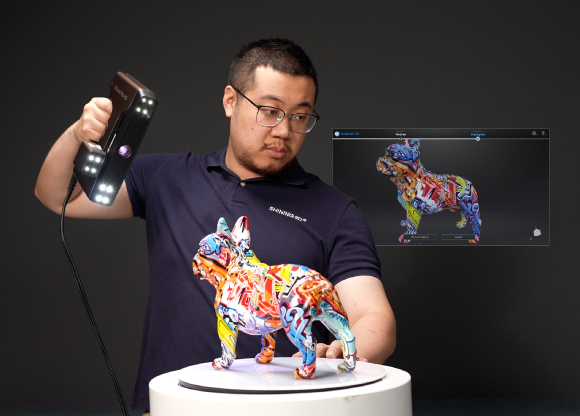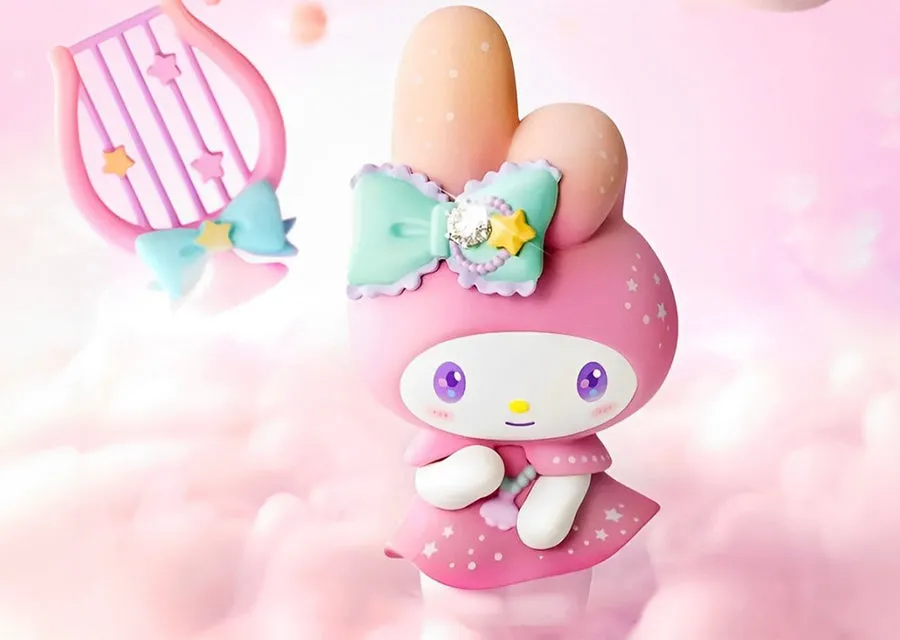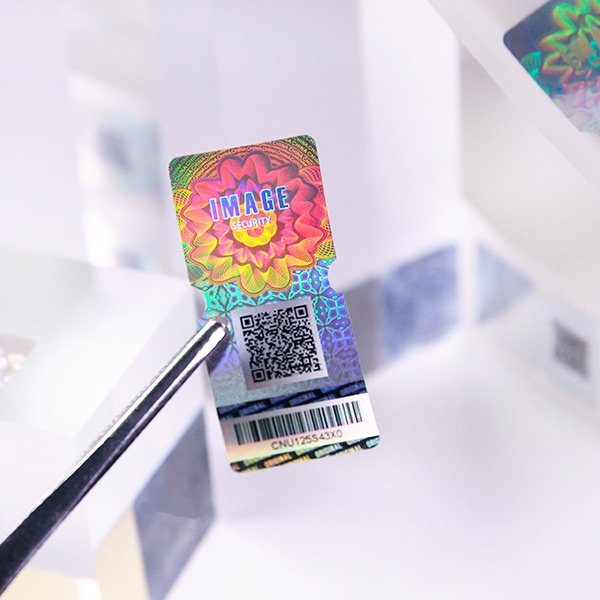The Fusion Revolution: How Artist Collaborations are Reshaping Designer Toy Innovation
The Designer Toy Renaissance: Where Art Meets Collectibility
The Designer Toy Renaissance: Where Art Meets Collectibility
I've been fascinated by the remarkable evolution of designer toys over the past decade. What began as niche collectibles cherished by a small community has blossomed into a legitimate art movement that's capturing mainstream attention. The transformation has been nothing short of revolutionary.

In 2024, I'm seeing cross-disciplinary partnerships redefining what constitutes a "toy." These collaborations between fine artists, illustrators, fashion designers, and toy manufacturers have transformed simple vinyl figures into coveted art objects that command serious attention and prices. The boundaries between fine art, street culture, and commercial product design have never been more fluid.
What particularly distinguishes designer toy culture from traditional art markets is the unique community dynamics. As collectors ourselves, we're not just passive consumers but active participants in the creative conversation. The accessibility of these pieces—while still limited—creates a more democratic art form that bridges high and low culture in ways traditional galleries never could.
Evolution of Designer Toys (2000-2024)
The chart below illustrates the growth trajectory and key evolutionary phases of designer toys:
To better understand this evolution, I've been using symbol visuals in art and design to track how motifs and meanings have shifted over time. PageOn.ai's Vibe Creation tool has been invaluable for visualizing these collaborative timelines, helping me map the connections between seemingly disparate artistic movements that have influenced today's designer toy landscape.
Anatomy of Groundbreaking Artist Collaborations
When I examine the most successful collaborations in the designer toy world, I find that they typically follow specific partnership models that maximize creative output while minimizing friction. The most innovative pieces emerge when there's a perfect balance between artistic vision and commercial viability.

One prime example I've studied closely is Demeng Toy's approach to artist partnerships. Their collaborative model emphasizes long-term relationships over one-off projects, allowing for deeper creative exploration and more cohesive design languages to develop over time. This strategy has positioned them as innovation leaders in the space.
I've observed that the most groundbreaking collaborations happen when complementary skillsets come together. When a conceptual artist with bold ideas partners with a technical sculptor who can translate those visions into three-dimensional reality, the results can be extraordinary. Add in a painter with a distinctive style, and suddenly you have a unique creative alchemy that couldn't exist with any single creator.
Collaborative Ecosystem in Designer Toy Creation
This diagram illustrates the interconnected relationships in successful toy collaborations:
flowchart TD
A[Concept Artist] -->|Ideas & Sketches| D[Collaborative Design Process]
B[Sculptor] -->|3D Prototyping| D
C[Painter/Finisher] -->|Color & Texture| D
E[Manufacturer] -->|Production Expertise| D
D -->|Iterative Feedback| A
D -->|Technical Refinement| B
D -->|Aesthetic Direction| C
D -->|Manufacturing Constraints| E
D -->|Final Product| F[Limited Edition Release]
F -->|Market Feedback| G[Future Collaborations]
G --> A
In my experience, authentic creative chemistry is far more important than partnerships formed purely for commercial gain. Collectors can sense when a collaboration is genuine versus when it's simply a marketing exercise. The most innovative designs emerge from true creative synergy, where artists push each other to explore new territory they wouldn't have ventured into alone.
To better understand these complex collaborative workflows, I've been utilizing PageOn.ai's AI Blocks to visualize production pipelines. This tool has been particularly helpful for mapping the intricate handoffs between different specialists and identifying potential bottlenecks in the creative process.
Cross-Pollination: When Different Art Forms Converge
I'm particularly excited about how different artistic disciplines are converging in the designer toy world. Street artists bring raw urban energy, fine artists contribute conceptual depth, and digital creators add technological innovation. When these diverse perspectives collide, the results can be truly groundbreaking.

What fascinates me is how emerging technologies are being integrated into traditional toy craftsmanship. I've seen artists incorporate augmented reality elements that extend the physical toy into digital realms, 3D printing techniques that enable previously impossible geometries, and even embedded electronics that transform static figures into interactive experiences.
Unexpected Collaborative Pairings
This chart highlights some of the most innovative cross-disciplinary collaborations:
Some of the most exciting collaborations I've witnessed involve unexpected pairings: fashion designers bringing textile innovations to vinyl figures, architects applying structural thinking to toy forms, and industrial designers introducing new manufacturing techniques. These unconventional partnerships are creating entirely new aesthetic languages that couldn't exist within traditional disciplinary boundaries.
Material innovation is another area where cross-disciplinary thinking shines. I've seen collaborations that introduce sustainable bioplastics, recycled materials, and even experimental compounds that change color or texture with temperature or light. These material explorations often begin when artists from different backgrounds question assumptions about what a "toy" should be made from.
To gather and integrate visual references from diverse artistic movements, I've been relying on PageOn.ai's Deep Search capabilities. This tool has been invaluable for connecting seemingly disparate visual traditions and identifying emerging aesthetic patterns that might inform future visual communication for designers in this space.
From Concept to Collectible: The Collaborative Design Process
The journey from initial concept to final collectible is a fascinating process that I've had the privilege to observe up close. Collaborative toy creation typically follows distinct stages, each requiring different skills and presenting unique challenges.
Designer Toy Development Pipeline
This flowchart illustrates the key stages in collaborative toy creation:
flowchart TD
A[Concept Development] -->|Initial Sketches| B[2D Design Refinement]
B -->|Approved Designs| C[3D Modeling & Sculpting]
C -->|Digital Prototype| D[3D Printing Test]
D -->|Physical Prototype| E[Artist Review]
E -->|Revisions Needed| C
E -->|Approved| F[Mold Creation]
F -->|Production Molds| G[Material Selection]
G -->|Production Samples| H[Paint & Finish Development]
H -->|Final Prototype| I[Production Run]
I -->|Quality Control| J[Packaging Design]
J -->|Complete Package| K[Release & Distribution]
style A fill:#FF8000,color:white
style K fill:#E35D6A,color:white

I've noticed a significant shift in how digital tools enhance rather than replace traditional craftsmanship. The most successful collaborations blend digital design software, 3D printing for rapid prototyping, and hand-finishing techniques that preserve the human touch. This hybrid approach allows for precision and scalability without sacrificing the warmth and character that collectors value.
The iterative feedback loop between collaborating artists is where much of the innovation happens. I've watched initial concepts transform dramatically through this process, often becoming more refined and ambitious than any single creator could have envisioned. This back-and-forth exchange pushes boundaries and challenges conventions in ways that solitary creation rarely achieves.
One of the greatest challenges in collaborative toy design is balancing artistic vision with manufacturing constraints. I've seen brilliant concepts scaled back due to production limitations, but I've also witnessed innovative solutions emerge from these very constraints. The most successful collaborations approach these limitations as creative challenges rather than roadblocks.
To document these complex methodologies, I've been creating visual process maps with PageOn.ai. These maps have been invaluable for tracking how different collaborative approaches yield different results, and for identifying patterns in successful partnerships. The ability to visualize these workflows has helped me understand the delicate balance between structure and creative freedom in collaborative design.
Community-Driven Innovation: The Social Dimension of Collaboration
What truly sets designer toys apart from many other art forms is the vibrant community that surrounds them. I've seen firsthand how collector feedback directly influences future artist collaborations and design directions. This dynamic conversation between creators and collectors creates a uniquely responsive creative ecosystem.

Social media has revolutionized how these collaborations are developed and promoted. I've watched artists use platforms like Instagram to document their collaborative process in real-time, building anticipation and allowing collectors to feel personally invested in the creation journey. This transparency creates deeper connections between artists and their audience.
Community Engagement Methods
This chart compares the effectiveness of different community engagement strategies:
Pop-up events and conventions serve as crucial innovation incubators in the designer toy world. I've attended events where spontaneous collaborations form between artists who've just met, resulting in unexpected creative partnerships that might never have happened otherwise. These in-person gatherings create a fertile ground for cross-pollination of ideas.
The exclusive drop model has become a defining feature of designer toy culture. I've analyzed how limited editions and timed releases build anticipation and community engagement, creating moments of shared excitement that strengthen collector bonds. This scarcity model has proven remarkably effective at sustaining interest and driving innovation.
To better understand these community dynamics, I've been using PageOn.ai's AI Blocks to visualize sentiment data around specific collaborations. This has helped me identify patterns in what resonates with collectors and how community preferences evolve over time. The insights gained from these visualizations have been invaluable for predicting future trends in this rapidly evolving space.
The rise of Midjourney AI art has also begun influencing how some artists approach collaborative concept development, offering new possibilities for generating unexpected design directions that human collaborators might not have considered.
Global Influences: Cultural Fusion in Designer Toy Collaborations
One of the most fascinating aspects of today's designer toy scene is the emergence of distinct regional aesthetics. I've noticed how Asian, European, and American toy scenes each bring unique sensibilities to their creations, influenced by local artistic traditions, pop culture, and design history.

Regional Design Characteristics
This chart compares the distinctive traits of major designer toy markets:
The most exciting developments I've observed come from cross-cultural collaborations that produce hybrid design languages. When Japanese vinyl toy techniques meet European conceptual art approaches, or when American street art aesthetics blend with traditional Asian craftsmanship, the results can be truly innovative. These cultural fusions create visual languages that feel both familiar and entirely new.
I'm particularly interested in how traditional craftsmanship techniques are finding new expression through modern toy design. I've seen collaborations that incorporate Japanese lacquer techniques, Chinese paper cutting, European marquetry, and countless other heritage crafts into contemporary toy forms. This preservation and evolution of traditional skills creates pieces with both historical depth and modern relevance.
Cultural Influence Flow Map
This diagram tracks the exchange of aesthetic influences across borders:
flowchart TD
A[Japanese Kawaii] -->|Character Design| G[Global Hybrid Styles]
B[American Street Art] -->|Urban Aesthetics| G
C[European Conceptual] -->|Abstract Approaches| G
D[Chinese Traditional] -->|Cultural Motifs| G
E[Mexican Folk Art] -->|Color Palettes| G
F[African Sculpture] -->|Form Language| G
G -->|New Fusion| H[Next Generation Designs]
H -->|Evolution| A
H -->|Evolution| B
H -->|Evolution| C
H -->|Evolution| D
H -->|Evolution| E
H -->|Evolution| F
Cultural symbolism and narrative play crucial roles in many collaborative toy projects. I've analyzed pieces that incorporate mythology, folklore, and cultural iconography in ways that create rich storytelling layers within seemingly simple objects. The most successful cross-cultural collaborations approach these elements with both respect and creative freedom.
To track these complex aesthetic exchanges across borders, I've been creating visual cultural influence maps with PageOn.ai. These visualizations help me understand how design ideas travel globally and transform as they encounter different cultural contexts. This mapping process has revealed fascinating patterns in how aesthetic innovations spread within the designer toy community.
The Commercial Canvas: Business Models Driving Creative Partnerships
The business structures behind artist collaborations significantly impact their creative outcomes. I've studied how different revenue-sharing and licensing models create varying levels of creative freedom. The most innovative partnerships often employ flexible arrangements that align financial incentives with artistic goals.

I've observed a significant shift from mass production to limited edition drops as a collaborative business strategy. This approach reduces financial risk while creating exclusivity that benefits both artists and collectors. The scarcity model has proven particularly effective for experimental collaborations that might be too risky for large production runs.
Business Models Comparison
This chart compares different business approaches in collaborative toy design:
The tension between commercial viability and artistic integrity is a constant challenge in designer toy partnerships. I've analyzed how the most successful collaborations maintain this delicate balance, creating pieces that satisfy both creative ambitions and market realities. This often requires transparent communication about expectations from the very beginning.
Crowdfunding has emerged as a powerful tool for enabling more experimental collaborative projects. I've watched campaigns that connect artists directly with their audience, bypassing traditional gatekeepers and funding structures. This model allows for riskier creative directions that might not have found support through conventional channels.
The generative AI market report suggests that new technologies are also beginning to influence business models in the designer toy industry, with some collaborations incorporating AI-assisted design tools to reduce production costs while maintaining creative quality.
To understand these complex business relationships, I've been using PageOn.ai to visualize licensing and partnership structures in the toy industry. These visualizations help clarify how different stakeholders interact and where value is created within collaborative networks. This clarity is essential for designing partnerships that are both commercially sustainable and creatively fulfilling.
Future Trajectories: The Next Wave of Collaborative Innovation
As I look toward the future of designer toy collaborations, several emerging technologies stand poised to transform the landscape. Augmented reality, virtual reality, advanced 3D printing, and artificial intelligence are all opening new creative possibilities that previous generations of toy designers could only dream of.

Sustainability has become a central concern driving material experimentation in the industry. I'm seeing collaborations focused on biodegradable plastics, recycled materials, and zero-waste production methods. This ecological consciousness is not just ethically important but is spawning entirely new aesthetic directions based on sustainable materials' unique properties.
Emerging Technologies Impact
This chart predicts how various technologies will influence designer toy collaborations:
I'm particularly excited about the potential for cross-industry collaborations that will shape the next generation of designer toys. Partnerships between toy artists and fields like architecture, biotech, fashion, and performance art promise to expand our very conception of what a "toy" can be. These boundary-crossing experiments will likely produce the most revolutionary innovations in the coming years.
Future Evolution Pathways
This diagram maps potential evolutionary directions for designer toys:
flowchart TD
A[Current Designer Toys] --> B[Physical/Digital Hybrids]
A --> C[Sustainable Materials Revolution]
A --> D[Interactive Smart Toys]
A --> E[Personalized On-Demand Production]
B --> F[Extended Reality Experiences]
C --> G[Zero-Impact Collectibles]
D --> H[AI-Enhanced Interactions]
E --> I[Mass Customization]
F --> J[Future State:
Boundary-Dissolving Objects]
G --> J
H --> J
I --> J
style A fill:#FF8000,color:white
style J fill:#E35D6A,color:white
The evolution of digital/physical hybrid experiences is perhaps the most transformative trend on the horizon. I'm seeing early experiments that blend physical toys with digital extensions, creating experiences that flow seamlessly between tangible objects and virtual worlds. This convergence challenges our traditional understanding of what constitutes a collectible.
The integration of AI tools for visual novel creation and storytelling is also beginning to influence how some designer toys incorporate narrative elements, expanding the storytelling potential of these objects.
To visualize these forward-looking scenarios, I've been leveraging PageOn.ai's Agentic capabilities. These tools allow me to create visual projections of where the industry might be heading, identifying emerging opportunities for artists and brands alike. By mapping these potential futures, we can better prepare for the next wave of collaborative innovation in the designer toy world.
Transform Your Visual Expression with PageOn.ai
Ready to create stunning visualizations for your designer toy concepts, collaborative workflows, or market analysis? PageOn.ai provides powerful tools to bring your creative ideas to life with professional-quality diagrams, charts, and visual maps.
Start Creating with PageOn.ai TodayEmbracing the Collaborative Future
As I reflect on the current state of designer toy collaborations, I'm struck by how this art form continues to evolve through the power of creative partnerships. The fusion of diverse perspectives, skills, and cultural influences has created a vibrant ecosystem that constantly reinvents itself.
The most successful collaborations share certain key characteristics: authentic creative chemistry, complementary skillsets, mutual respect, and a willingness to push boundaries. When these elements align, the results can transcend what any single creator could achieve alone.
Looking ahead, I believe we'll see even more boundary-dissolving collaborations that challenge our very conception of what designer toys can be. The integration of emerging technologies, sustainable materials, and cross-disciplinary approaches will continue to expand the creative possibilities in exciting and unexpected ways.
For those looking to document, analyze, or visualize these complex collaborative relationships, PageOn.ai offers powerful tools that can transform abstract concepts into clear visual expressions. Whether mapping the flow of cultural influences, visualizing production pipelines, or creating compelling presentations of collaborative work, these visualization capabilities help make sense of the rich and multifaceted world of designer toy innovation.
You Might Also Like
Visualizing the AI Revolution: From AlphaGo to AGI Through Key Visual Milestones
Explore the visual journey of AI evolution from AlphaGo to AGI through compelling timelines, infographics and interactive visualizations that map key breakthroughs in artificial intelligence.
How AI Amplifies Marketing Team Capabilities While Preserving Human Jobs | Strategic Marketing Enhancement
Discover how AI transforms marketing teams into powerhouses without reducing workforce size. Learn proven strategies for capability multiplication and strategic enhancement.
Prompt Chaining Techniques That Scale Your Business Intelligence | Advanced AI Strategies
Master prompt chaining techniques to transform complex business intelligence workflows into scalable, automated insights. Learn strategic AI methodologies for data analysis.
Mapping the Great Depression: Visualizing Economic Devastation and Recovery
Explore how data visualization transforms our understanding of the Great Depression, from unemployment heat maps to New Deal program impacts, bringing America's greatest economic crisis to life.
